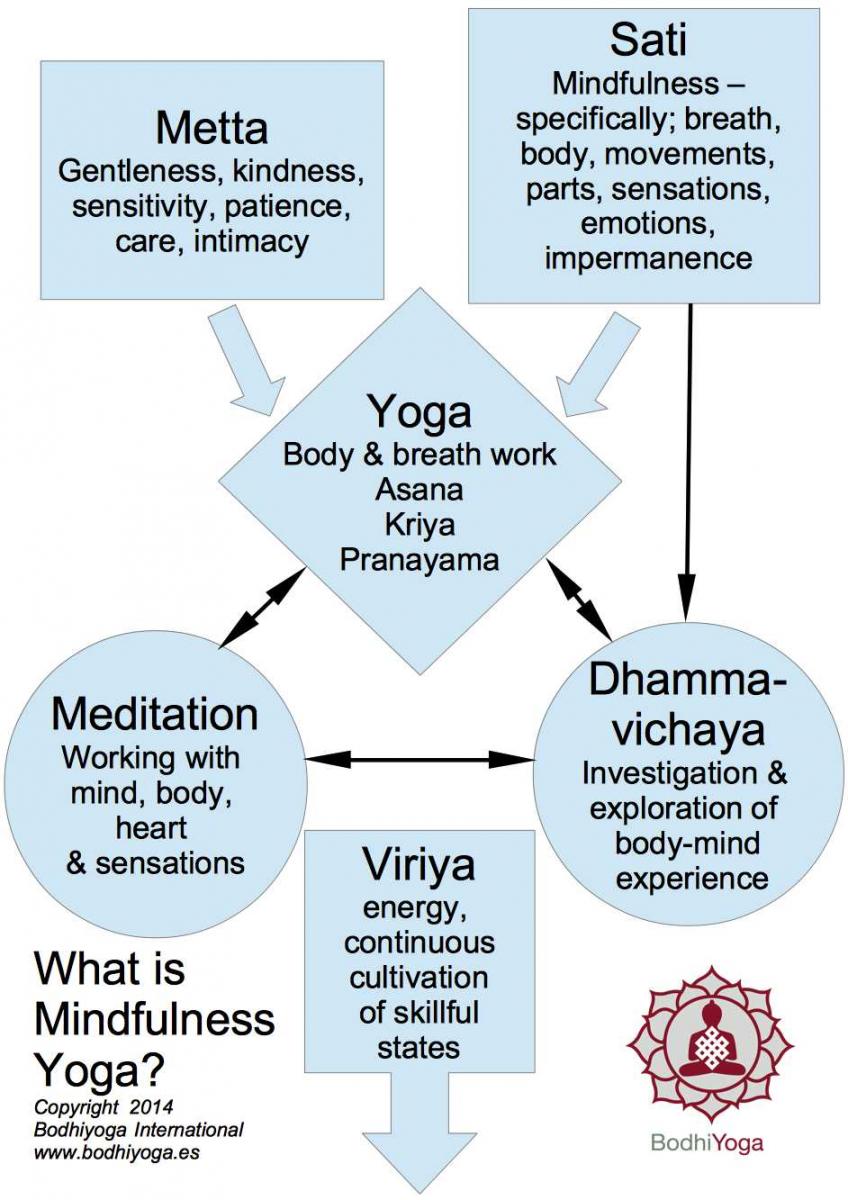 Bodhiyoga "Mindfulness Yoga" draws strongly from the teachings on "metta" or loving kindness and "sati" or mindfulness - especially as outlined in the Satipatthana Sutta - ideas and practices which come from the earliest strata of the Buddha's teaching as recorded in the Pali Canon.
Bodhiyoga "Mindfulness Yoga" draws strongly from the teachings on "metta" or loving kindness and "sati" or mindfulness - especially as outlined in the Satipatthana Sutta - ideas and practices which come from the earliest strata of the Buddha's teaching as recorded in the Pali Canon.
Essentially we bring mindfulness to our yoga practice. Powerfully and wonderfully simple. One important aim of yoga is to develop and cultivate energy “viriya” (Pali). Viriya is the continuous transformation of unskilful states of being marked by greed, hatred and confusion into creative states of mind based in love, generosity and wisdom.
At the heart of the mandala is yoga and meditation. The qualities of metta, loving kindness and sati, mindfulness, inform our approach from the deeper level. We are mindful especially of the body, its parts and movements, sensations (vedana), emotions and mind-states (citta).
Closely related and following on from the practice of mindfulness is “dhammavichaya”. We encounter this in the teaching on the seven factors of Awakening, also found in the Satipatthana Sutta. Dhammavichaya builds on mindfulness and leads on to energy (viriya). Dhammavichaya is an explorative, investigative quality that in meditation we use to determine if we are developing a skilful, more expansive awareness or a more hampered, claustrophobic unskilful mind. In our yoga practice we can bring this element in to explore how we are working on the body and the effect of our practice as we proceed enhancing our sensitivity and understanding.
This reflexive quality results in our yoga practice being more a practice done from “within” or from the “inside out” rather than the “outside in”. Postures are then not a discipline imposed on the body from potentially insensitive externally applied instructions from either an ambitious yoga teacher or an over zealous practitioner! We begin to explore our body through and from within our body. The overall atmosphere of the practice becomes more internalised and more meditative.
Employing mindfulness and metta we can really take responsibility for our body-work and meditation practice. Ultimately we take responsibility for our own spiritual lives.
- Log in to post comments

